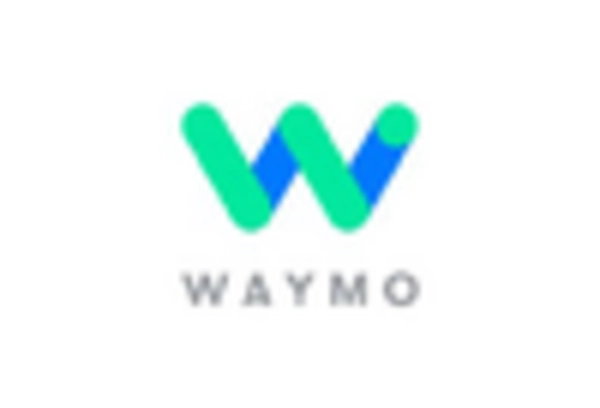Focus on Fleet Management Solutions
The focus on fleet management solutions is emerging as a crucial driver for the NVS Vehicle Intelligence System Market. Companies are increasingly recognizing the value of intelligent systems in optimizing fleet operations, reducing costs, and improving efficiency. NVS technologies enable real-time tracking, predictive maintenance, and data analytics, which are essential for effective fleet management. Market data indicates that the fleet management market is projected to grow significantly, driven by the need for businesses to enhance operational efficiency and reduce downtime. As a result, there is a growing demand for NVS systems that can provide comprehensive insights into vehicle performance and driver behavior, thereby supporting businesses in making informed decisions.
Consumer Preference for Smart Vehicles
Consumer preference for smart vehicles is a significant driver of the NVS Vehicle Intelligence System Market. As technology becomes more integrated into daily life, consumers are increasingly seeking vehicles equipped with intelligent systems that offer enhanced convenience and safety. Features such as voice recognition, automated driving capabilities, and personalized user experiences are becoming standard expectations. Market Research Future indicates that a substantial percentage of consumers are willing to pay a premium for vehicles that incorporate advanced NVS technologies. This shift in consumer behavior is prompting manufacturers to prioritize the development of innovative NVS solutions that cater to these preferences, thereby driving market growth and fostering competition among industry players.
Technological Advancements in Connectivity
Technological advancements in connectivity are significantly influencing the NVS Vehicle Intelligence System Market. The proliferation of 5G technology and the Internet of Things (IoT) is enabling vehicles to communicate with each other and with infrastructure, enhancing the capabilities of NVS systems. This connectivity allows for real-time data exchange, which can improve traffic management, reduce accidents, and enhance overall driving experience. Market data suggests that the connected vehicle market is expected to reach several billion dollars in the coming years, driven by the demand for smarter transportation solutions. As a result, manufacturers are increasingly focusing on integrating advanced connectivity features into their NVS systems, thereby positioning themselves competitively in the market.
Government Regulations and Safety Standards
Government regulations and safety standards are increasingly shaping the NVS Vehicle Intelligence System Market. Regulatory bodies are mandating the incorporation of advanced safety features in vehicles, which necessitates the use of intelligent systems for compliance. For instance, the implementation of stricter emissions standards and safety protocols is compelling manufacturers to adopt NVS technologies that monitor vehicle performance and ensure adherence to these regulations. This trend is expected to drive market growth, as companies seek to innovate and develop systems that not only meet but exceed regulatory requirements. The potential for penalties and recalls due to non-compliance further incentivizes the adoption of NVS systems, making them a critical component in modern vehicle design.
Rising Demand for Advanced Driver Assistance Systems
The increasing demand for Advanced Driver Assistance Systems (ADAS) is a pivotal driver for the NVS Vehicle Intelligence System Market. As consumers become more safety-conscious, the integration of features such as lane-keeping assistance, adaptive cruise control, and automatic emergency braking is gaining traction. According to recent data, the ADAS market is projected to grow at a compound annual growth rate of over 10% through the next few years. This growth is likely to spur the adoption of NVS systems, which enhance vehicle intelligence by providing real-time data and analytics. Consequently, manufacturers are investing heavily in developing sophisticated NVS solutions that can seamlessly integrate with ADAS, thereby enhancing overall vehicle safety and performance.


















Leave a Comment